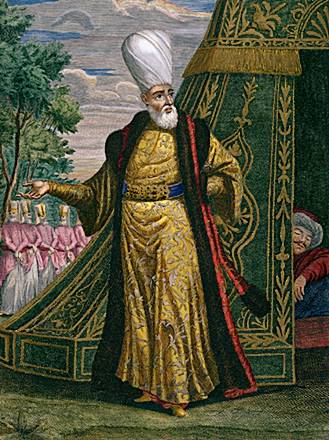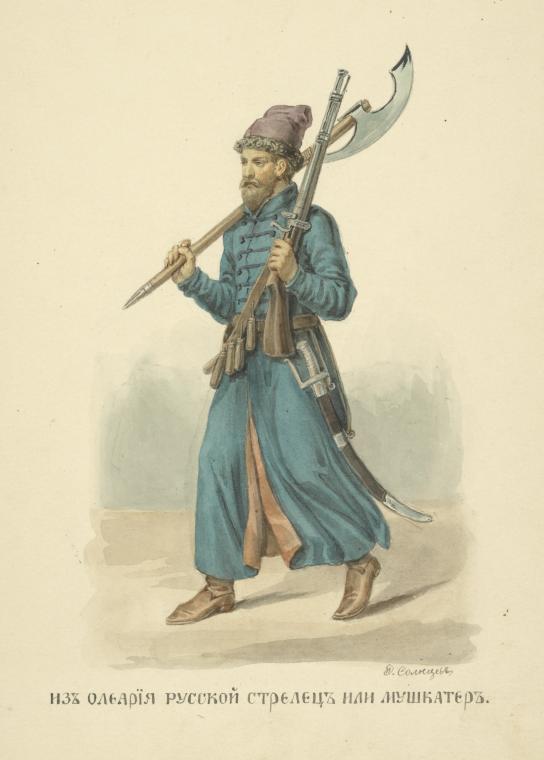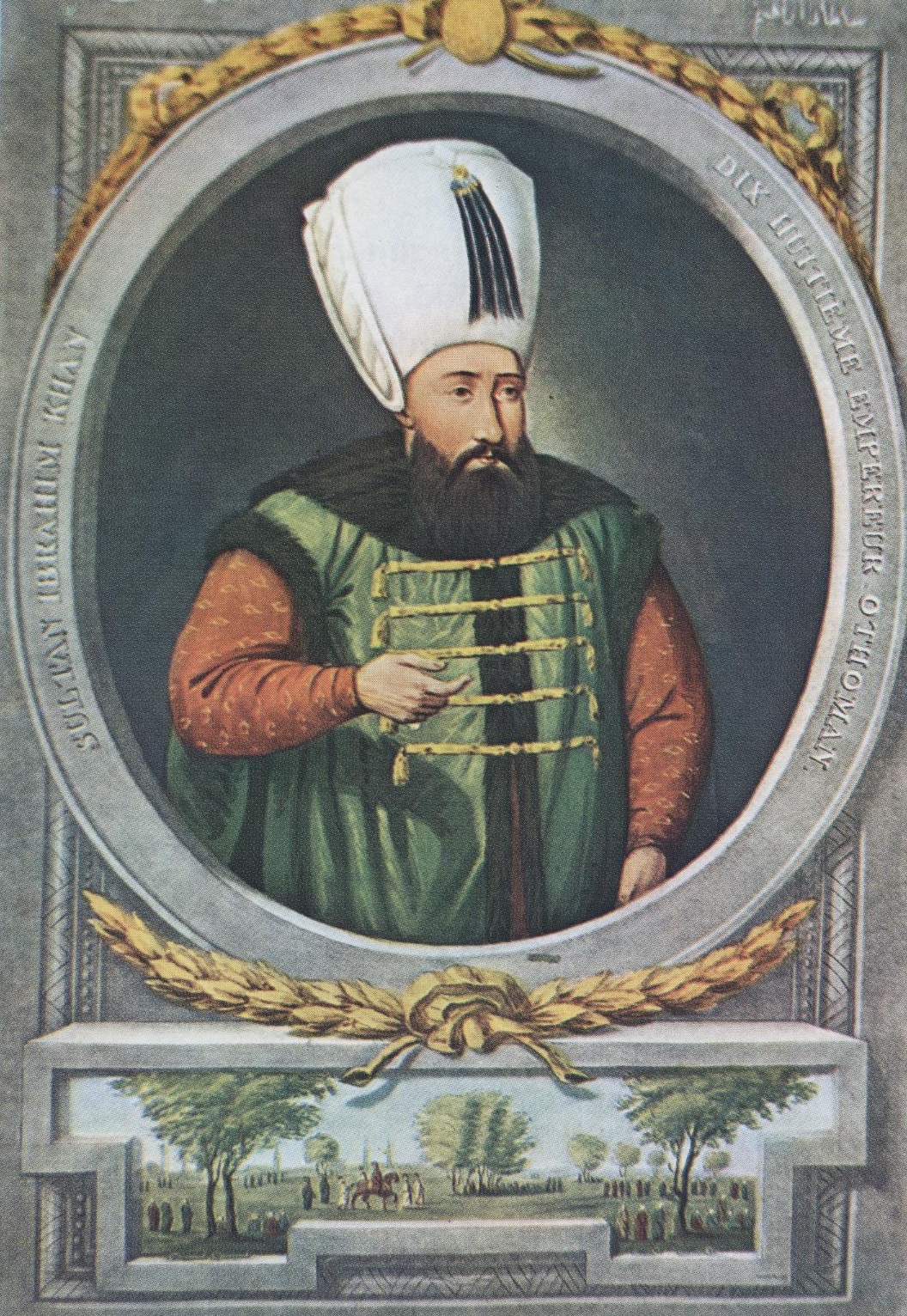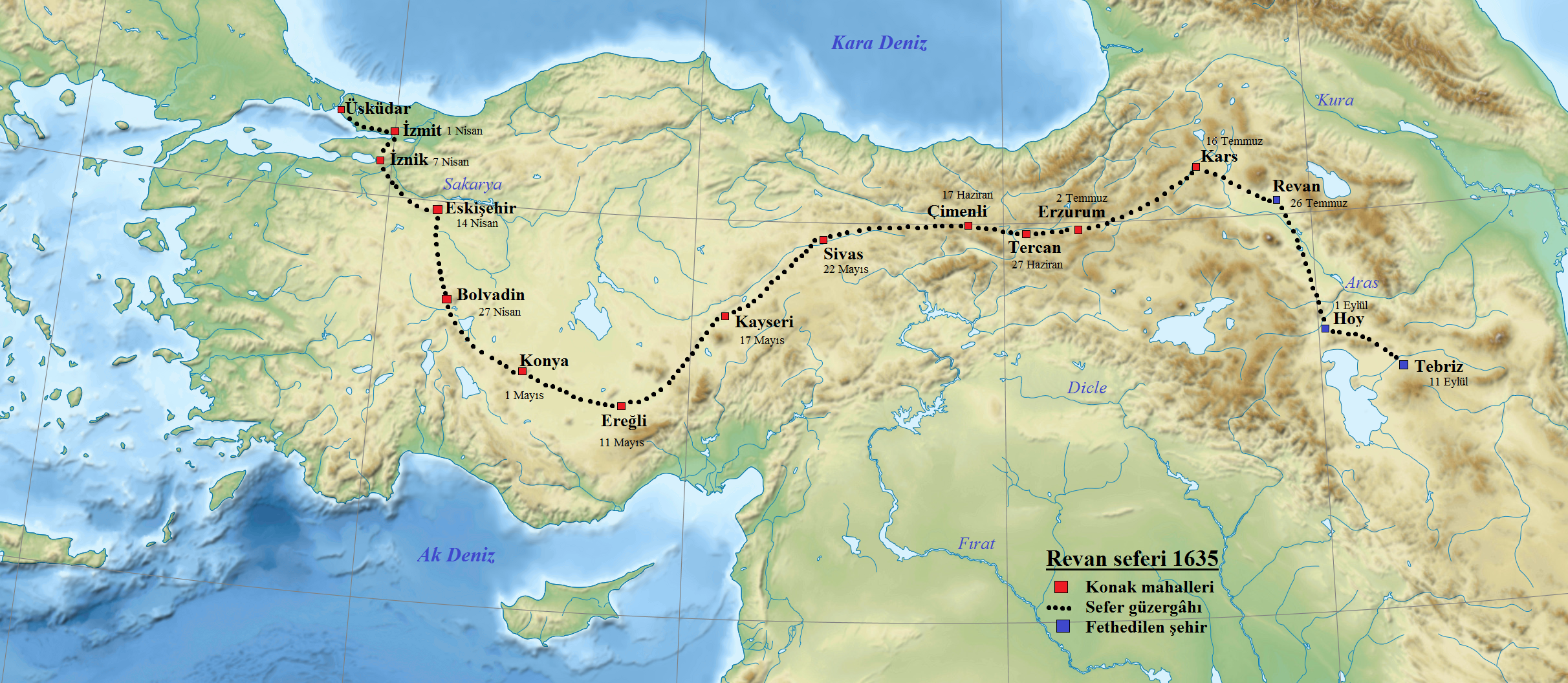|
Siege Of Azov (1637–1642)
The siege of Azov, in Russian historiography known as Azov sitting () or Azov crisis () was a series of conflicts over control of Azov fortress between Don–Zaporozhian Cossacks and Ottoman–Crimean– Nogai forces from 21 April 1637 to 30 April 1642. Prelude 4,000 Zaporozhian Cossacks and 3,000 Don Cossacks unexpectedly met each other as they were moving through Crimean and Nogai steppes. Zaporozhian leader Pavlo Pavliuk and Don leader Mikhail Tatarinov decided to change their respective plans, instead planning a joint campaign on the Ottoman fortress of Azov. They viewed this as a brilliant idea where they could get plenty of loot and possession of their own city. Campaigns Capture of Azov 1637 On April 21, Cossacks besieged the Azov fortress. The fortress was defended by 4,000 Ottoman Janissaries who had 200 guns at their disposal. Janissaries attempted to deter the Cossacks by firing at them, the Cossacks dug under the city and placed explosives under the city ... [...More Info...] [...Related Items...] OR: [Wikipedia] [Google] [Baidu] |
Cossack Raids
The Cossack raids largely developed as a reaction to the Crimean–Nogai slave raids in Eastern Europe, which began in 1441 and lasted until 1774. From onwards, the Cossacks (the Zaporozhian Cossacks of southern Ukraine and the Don Cossacks of southern Russia) conducted regular military offensives into the lands of the Crimean Khanate, the Nogai Horde, and the Ottoman Empire, where they would free History of slavery in the Muslim world, enslaved Christians before returning home with a significant amount of plunder and Slavery in medieval Europe, Muslim slaves. Though difficult to calculate, the level of devastation caused by the Cossack raids is roughly estimated to have been on par with that of the Crimean–Nogai slave raids. According to History of Ruthenians, Cossack raids during Sirko's Campaigns, Sirko's era were a hundred times more devastating than Crimean–Nogai raids. Background The first raid of the Zaporozhian Cossacks was recorded on 1 August, 1492, which was an ... [...More Info...] [...Related Items...] OR: [Wikipedia] [Google] [Baidu] |
Janissaries
A janissary (, , ) was a member of the elite infantry units that formed the Ottoman sultan's household troops. They were the first modern standing army, and perhaps the first infantry force in the world to be equipped with firearms, adopted during the reign of Murad II (r. 1421–1444, 1446–1451). The corps was established under either Orhan or Murad I, and dismantled by Mahmud II in 1826. Janissaries began as elite corps made up through the '' devşirme'' system of child levy enslavement, by which indigenous European Christian boys, chiefly from the Balkans, were taken, levied, subjected to forced circumcision and forced conversion to Islam, and incorporated into the Ottoman army. They became famed for internal cohesion cemented by strict discipline and order. Unlike typical slaves, they were paid regular salaries. Forbidden to marry before the age of 40 or engage in trade, their complete loyalty to the Ottoman sultan was expected. By the 17th century, due to a drama ... [...More Info...] [...Related Items...] OR: [Wikipedia] [Google] [Baidu] |
Streltsy
The streltsy (, ; , ) were the units of Russian firearm infantry from the 16th century to the early 18th century and also a social stratum, from which personnel for streltsy troops were traditionally recruited. They are also collectively known as ''streletskoye voysko'' (). These infantry troops reinforced feudal levy horsemen or ''Landed Army, pomestnoye voysko'' (). The first units were established by Ivan the Terrible as part of the first Russian standing army. The streltsy were under the administration of the ''Streletsky prikaz'' from 1571. Peter the Great curtailed the influence of the streltsy, and following the streltsy uprising of 1698, streltsy units began to be disbanded. However, it was not until the 1720s that this process was completed. Origins and organization The first streltsy units were created by Ivan the Terrible sometime between 1545 and 1550 and armed with Arquebus, arquebuses. During his reign, Russia was fighting wars almost continuously, including ... [...More Info...] [...Related Items...] OR: [Wikipedia] [Google] [Baidu] |
Astrakhan
Astrakhan (, ) is the largest city and administrative centre of Astrakhan Oblast in southern Russia. The city lies on two banks of the Volga, in the upper part of the Volga Delta, on eleven islands of the Caspian Depression, from the Caspian Sea, with a population of 475,629 residents at the 2021 Census. At an elevation of below sea level, it is the lowest city in Russia. Astrakhan was formerly the capital of the Astrakhan Khanate, Khanate of Astrakhan (a remnant of the Golden Horde) of the Astrakhan Tatars, and was located on the higher right bank of the Volga, from the present-day city. Situated on caravan and water routes, it developed from a village into a large trading centre, before being conquered by Timur in 1395 and captured by Ivan the Terrible in 1556 and in 1558 it was moved to its present site. The oldest economic and cultural center of the Volga region, Lower Volga region, it is often called the southernmost outpost of Russia, and the Caspian capital. The city ... [...More Info...] [...Related Items...] OR: [Wikipedia] [Google] [Baidu] |
Great Russian Encyclopedia
The ''Great Russian Encyclopedia'' (''GRE''; , БРЭ, transliterated as ''Bolshaya rossiyskaya entsiklopediya'' or academically as ''Bol'šaja rossijskaja ènciklopedija'') is a universal Russian encyclopedia, completed in 36 volumes, published between 2004 and 2017 by Great Russian Encyclopedia, JSC (, transliterated as ''Bolshaya rossiyskaya entsiklopediya PAO''). A successor to the ''Great Soviet Encyclopedia'', it was released under the auspices of the Russian Academy of Sciences (RAS) after President Vladimir Putin signed a presidential decree №1156 in 2002. The complete edition was released by 2017. The chief editor of the encyclopedia was Yury Osipov, the president of the RAS. The editorial board had more than 80 RAS members. The first, introductory volume, released in 2004, was dedicated to Russia. Thirty-five volumes were released between 2005 and 2017, covering the range from "A" to " Яя" (''Yaya''). The RAS plans to publish an updated version every five years, ... [...More Info...] [...Related Items...] OR: [Wikipedia] [Google] [Baidu] |
Sloane 3584 F
Sloane may refer to: Names * Sloane (given name) * Sloane (surname) * Sloane Crosley, American writer and publicist * Sloane Stephens, American professional tennis player Places * Sloane, New South Wales * Sloane Square, a location in London, named after Hans Sloane: * Sloane Street, which terminates at Sloane Square * Sloane Square tube station, a London Underground station near Sloane Square Popular culture * Sloane Ranger, shortened to Sloane, is a slang term for young, upper-middle-class West Londoners * ''Entertaining Mr Sloane'', a 1964 play by Joe Orton **''Entertaining Mr Sloane'', the 1970 film version of the play by Joe Orton * ''Sloane'' (film), a 1984 action movie starring Robert Resnik * '' Mr. Sloane'', a 2014 British television series * ''Miss Sloane'', a 2016 American political thriller starring Jessica Chastain * Arvin Sloane, a character in the American TV series ''Alias'' * Lily Sloane, a character in ''Star Trek'' * Lone Sloane, a character in the s ... [...More Info...] [...Related Items...] OR: [Wikipedia] [Google] [Baidu] |
Ibrahim Of The Ottoman Empire
Ibrahim (; ; ; 13 October 1617 – 18 August 1648) was the sultan of the Ottoman Empire from 1640 until 1648. He was born in Constantinople as the last son of sultan Ahmed I and Kösem Sultan, an ethnic Greek originally named Anastasia. He was called Ibrahim the Mad () due to his mental condition and behavior. However, historian Scott Rank notes that his opponents spread rumors of the sultan's insanity, and some historians suggest he was more incompetent than mad. Early life Ibrahim was born on 13 October 1617 as the last son of Sultan Ahmed I and his Haseki Sultan, Kösem Sultan and when he was merely a month old, his father suddenly died and Ibrahim's uncle Mustafa I became the new sultan. Kösem Sultan and her children, including an infant Ibrahim, were sent to the Old Palace. After his brother Murad IV inherited the throne from his uncle Mustafa I, Ibrahim was confined in the Kafes, which affected his health. Murad had Ibrahim's two surviving half-brothers Şehzade B ... [...More Info...] [...Related Items...] OR: [Wikipedia] [Google] [Baidu] |
Ottoman–Safavid War (1623–1639)
The Ottoman–Safavid War of 1623–1639 was a conflict fought between the Ottoman Empire and Safavid Iran, then the two major powers of Western Asia, over control of Mesopotamia. After initial Safavid success in recapturing Baghdad and most of modern Iraq, having lost it for 90 years, the war became a stalemate as the Safavids were unable to press further into the Ottoman Empire, and the Ottomans themselves were distracted by wars in Europe and weakened by internal turmoil. Eventually, the Ottomans were able to recover Baghdad, taking heavy losses in Capture of Baghdad (1638), the final siege, and the signing of the Treaty of Zuhab ended the war in an Ottoman victory. Roughly speaking, the treaty restored the borders of Peace of Amasya, 1555, with the Safavids keeping Safavid Daghestan, Daghestan, Safavid Shirvan, Shirvan, eastern History of Georgia (country), Georgia, and Eastern Armenia, while western Georgia and Western Armenia decisively came under Ottoman rule. The eastern ... [...More Info...] [...Related Items...] OR: [Wikipedia] [Google] [Baidu] |
Tsardom Of Russia
The Tsardom of Russia, also known as the Tsardom of Moscow, was the centralized Russian state from the assumption of the title of tsar by Ivan the Terrible, Ivan IV in 1547 until the foundation of the Russian Empire by Peter the Great in 1721. From 1550 to 1700, Russia grew by an average of per year. The period includes the Time of Troubles, upheavals of the transition from the Rurik Dynasty, Rurik to the House of Romanov, Romanov dynasties, wars with the Polish–Lithuanian Commonwealth, Swedish Empire, Sweden, and the Ottoman Empire, and the Russian conquest of Siberia, to the reign of Peter the Great, who took power in 1689 and transformed the tsardom into an empire. During the Great Northern War, he implemented government reform of Peter I, substantial reforms and proclaimed the Russian Empire after Treaty of Nystad, victory over Sweden in 1721. Name While the oldest Endonym and exonym, endonyms of the Grand Principality of Moscow used in its documents were "Rus'" () and ... [...More Info...] [...Related Items...] OR: [Wikipedia] [Google] [Baidu] |
Nogais
The Nogais ( ) are a Kipchaks, Kipchak people who speak a Turkic languages, Turkic language and live in Southeastern Europe, North Caucasus, Volga region, Central Asia and Turkey. Most are found in Northern Dagestan and Stavropol Krai, as well as in Karachay-Cherkessia, Chechnya and Astrakhan Oblast; some also live in Dobruja (Romania and Bulgaria), Turkey, Kazakhstan, Uzbekistan, Ukraine and a small Nogai diaspora is found in Jordan. They speak the Nogai language and are descendants of various Mongols, Mongolic and Turkic peoples, Turkic tribes who formed the Nogai Horde. There are eight main groups of Nogais: the Ak Nogai, the Karagash, the Kuban-Nogai, the Kundraw-Nogai, the Qara-Nogai, the Utars, Bug-Nogai, and the Yurt-Nogai. Name Their name comes from their eponymous founder, Nogai Khan ( 'dog' in Mongolian language, Mongolian), a grandson of Jochi. Nogai (d. 1299–1300) was de facto ruler, kingmaker, and briefly self-proclaimed khan of the Golden Horde. Geographic distr ... [...More Info...] [...Related Items...] OR: [Wikipedia] [Google] [Baidu] |





